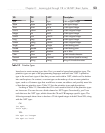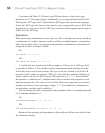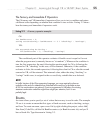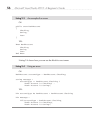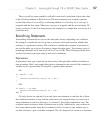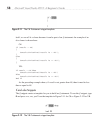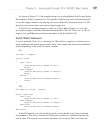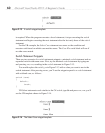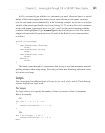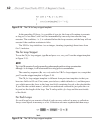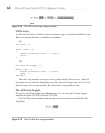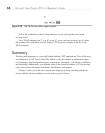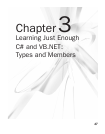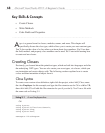
Chapter 2: Learning Just Enough C# or VB.NET: Basic Syntax 61
In C#, you normally just add the case statements you need. However, there is a special
feature of the switch snippet that makes it even more efficient to use enums, creating a
case for each enum value automatically. In the following example, we use the accountType
variable of the enum type BankAccount from Listing 2-3. To see how the switch statement
works with enums, type sw and press
TAB, TAB ; you’ll see the switch template with the
condition field highlighted. Type accountType in the field and press
ENTER. The switch
snippet will automatically generate cases for each of the BankAccount enum members
as follows:
switch (accountType)
{
case BankAccount.Checking:
break;
case BankAccount.Saving:
break;
case BankAccount.Loan:
break;
default:
break;
}
The enum comes through as a convenience that is easy to read and minimizes potential
spelling mistakes when using strings. Now that you know how branching statements work,
let’s move on to loops.
Loops
You can perform four different types of loops: for, for each, while, and do. The following
sections explain how loops work.
For Loops
For loops allow you to specify the number of times to execute a block of statements.
Here’s an example:
C#:
for (int i = 0; i < 3; i++)
{
Console.WriteLine("i = " + i);
}
VB:
For i As Integer = 0 To 2
Console.WriteLine("i = " & i)
Next



